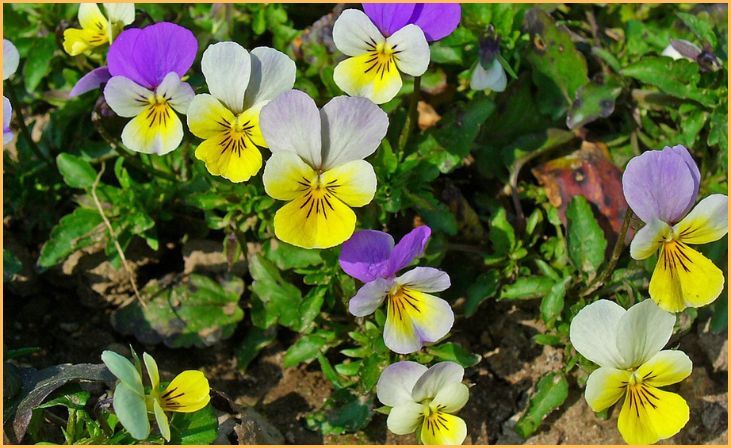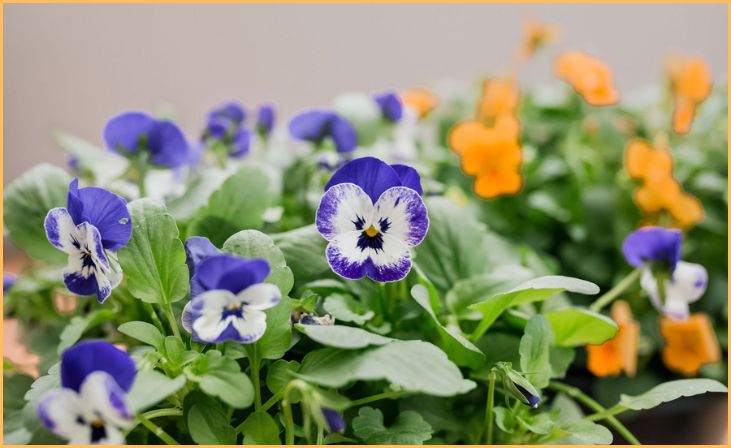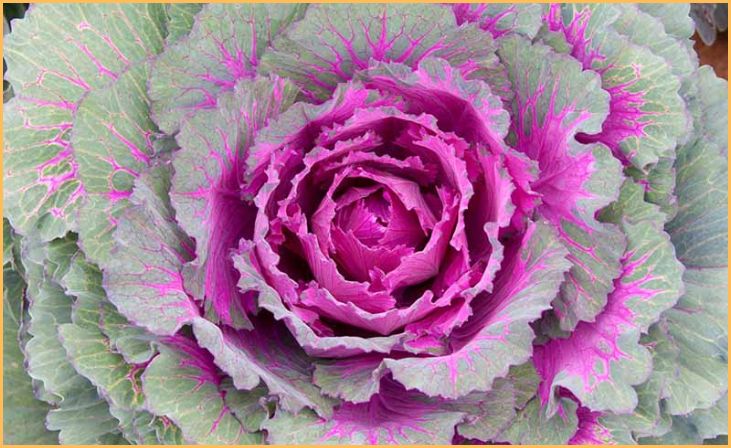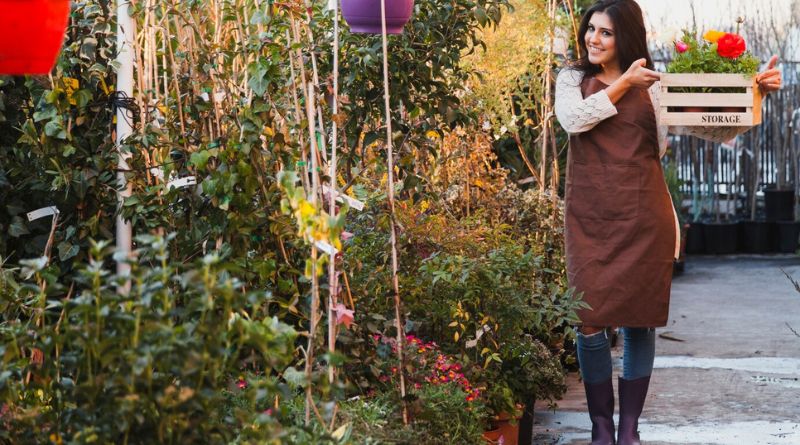Creating a vibrant winter garden necessitates the careful selection of the appropriate cool-season annuals. These particular plants not only have the resilience to endure the winter chill but also play a pivotal role in enhancing the overall aesthetic appeal of your outdoor space. As we embark on this informative journey, we will explore the intricacies of the “7 Best Cool Season Annuals For Winter Gardens,” offering valuable insights into the art of choosing, planting, and nurturing these botanical treasures.
Cool-season annuals serve as the backbone of a picturesque winter garden. Their ability to thrive in lower temperatures sets them apart, ensuring that your outdoor space remains lively and colorful even when other plants may struggle to endure the frosty weather. These resilient species are not merely survivors; they are contributors to the beauty and charm that define a winter garden.
7 Best Cool Season Annuals For Winter Gardens
Pansies (Viola tricolor):

Pansies are a delightful addition to winter gardens, known for their charming, “face-like” blooms and a wide spectrum of colors. These hardy annuals thrive in cool temperatures, making them ideal for the winter landscape. With proper care, they can continue to bloom throughout the season, bringing vibrancy and life to your garden beds or containers. Pansies are also versatile, suitable for both full sun and partial shade, making them adaptable to various garden environments. Their cold tolerance and resilience make them a favorite for gardeners looking to maintain color during the winter months. Regular deadheading can encourage continuous blooming, ensuring your garden stays lively and colorful despite the chill in the air.
Also Read:- Cat-Friendly Plants
Snapdragons (Antirrhinum majus):
Snapdragons are a classic choice for winter gardens, offering vertical interest with their tall spikes of colorful, tubular flowers. These cool-season annuals are not only visually appealing but also attract pollinators like bees and butterflies, contributing to the overall health of your garden ecosystem. Available in a wide range of colors, from soft pastels to bold and bright hues, snapdragons can complement various garden palettes. Their ability to withstand cooler temperatures and occasional frost makes them a reliable choice for winter floral displays. To encourage a prolonged blooming period, regular deadheading and adequate watering are essential.
Calendula (Calendula officinalis):
Calendula, commonly known as pot marigold, is a versatile and beautiful cool-season annual. Its bright and cheerful flowers bring warmth to winter gardens, and its benefits extend beyond aesthetics. Calendula is known for its medicinal properties, with anti-inflammatory and skin-soothing qualities. This makes it a valuable addition for those interested in both ornamental and functional aspects of gardening. Easy to grow and maintain, calendula thrives in cooler temperatures and can be grown in garden beds or containers. Regular deadheading not only promotes continuous blooming but also encourages a neat and tidy appearance in the garden. Considered a symbol of good fortune, calendula adds a touch of positivity to the winter landscape.
Violas:

Violas, cousins of pansies, are petite, yet they pack a punch in terms of color and charm. These cold-tolerant annuals are available in an array of colors and patterns, making them versatile for various garden designs. Violas are not only suitable for garden beds but also thrive in containers, hanging baskets, and window boxes, providing flexibility in your winter gardening arrangements. Their dainty yet resilient nature allows them to endure cooler temperatures, and with proper care, they can bloom continuously. Violas also attract beneficial insects, contributing to the overall health of your garden ecosystem. Whether used as border plants, ground cover, or accents in larger plantings, violas bring a touch of elegance to winter landscapes.
Winter Jasmine (Jasminum nudiflorum):
Winter jasmine is a deciduous shrub that brings a burst of sunshine to the winter garden with its bright yellow, star-shaped flowers. As a woody plant, it adds structure and interest to your landscape during the colder months when many other plants are dormant. Winter jasmine is particularly valuable for its ability to withstand chilly temperatures and even light frost. It typically blooms from late fall to early spring, offering a long-lasting display of color. This low-maintenance shrub is adaptable to various soil types and can thrive in both full sun and partial shade. Its arching branches can be trained to cascade over walls or trained into a more upright form, providing gardeners with options for creative landscaping.
Cyclamen (Cyclamen spp.):
Cyclamen, with its unique swept-back petals and marbled leaves, is a sophisticated choice for winter gardens. These tuberous perennials are prized for their ability to bloom during the cool months, adding elegance and grace to garden beds or containers. Cyclamen flowers come in various shades, including pinks, purples, and whites, creating a visually striking display. They prefer well-draining soil and can be grown in partial shade, making them adaptable to different garden conditions. Cyclamen’s charming appearance is complemented by its low maintenance requirements, making it a favored choice for those seeking a touch of refinement in their winter landscapes. To ensure optimal blooming, avoid overwatering and provide proper ventilation.
Also Read:- Bird-Friendly Plants
Ornamental Kale and Cabbage (Brassica oleracea):

Ornamental kale and cabbage are not only resilient in colder temperatures but also offer unique textures and colors to winter gardens. These leafy greens, with their ruffled or serrated leaves, create visual interest and can withstand light frost, enhancing the winter landscape. The vibrant hues, ranging from deep purples to rich greens, add a dynamic element to garden beds or containers. Ornamental kale and cabbage are versatile in design, suitable for both formal and informal garden arrangements. They pair well with other winter annuals, creating visually appealing combinations. While they are primarily grown for their ornamental value, these Ornamental plants are also edible, providing a dual-purpose option for gardeners interested in both aesthetics and culinary use. Regular pruning of damaged leaves helps maintain a tidy appearance and encourages healthy new growth.
Conclusion
Incorporating the “7 Best Cool Season Annuals For Winter Gardens” not only adds vibrant colors to your winter landscape but also brings numerous practical benefits. Enhance your garden aesthetics, prevent soil erosion, and attract beneficial insects by carefully selecting, planting, and caring for these resilient plants. Embrace the beauty of winter with a garden that flourishes even in the chilliest temperatures.
FAQs
Yes, all the mentioned cool-season annuals can thrive in containers with proper care and well-draining soil.
While some may attract pests, proper maintenance and companion planting can help minimize pest issues.







